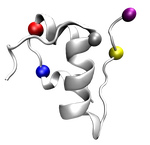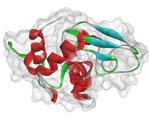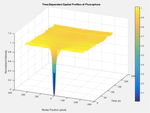Wei-Tse Hsu
Postdoctoral Research Associate in Drug Design
Department of Biochemistry, University of Oxford
About Me
Hi! I’m Wei-Tse Hsu, a Postdoctoral Research Associate in Drug Design in the Biggin Group at the University of Oxford. I am passionate about developing neural networks for binding affinity predictions and unraveling biophysical phenomena. I am proficient in molecular dynamics, enhanced sampling methods, and deep learning applications in computational molecular sciences. My Ph.D. work in the Shirts Group primarily focused on understanding the structural determinants of glycosylated insulin’s properties, as well as developing improved free energy methods such as alchemical metadynamics and replica exchange of expanded ensembles (REXEE). With the ultimate goal of becoming a professor, I have been enjoying making convoluted scientific topics more accessible, engaging, and inspiring. I also love sharing my insights on this website. (Check my recent posts and mini-courses for more!) In my spare time, I enjoy long-distance running, cooking, photography, and playing the guitar. Feel free to reach out to me at wei-tse.hsu@bioch.ox.ac.uk – I’d love to connect!
Download my curriculum vitae.
- Molecular dynamics
- Enhanced sampling methods
- Computational biophysics
- Deep learning
- Cheminformatics & Bioinformatics
Ph.D. in Chemical Engineering, 2018-2024
University of Colorado, Boulder
B.Sc. in Chemical Engineering, 2013-2017
National Taiwan University
Research Experience
See Research Projects and Publications for more details.
- Supervisor: Prof. Philip Biggin
- Developing neural network architectures for accurate protein-ligand binding affinity predictions.
- Advisor: Prof. Michael R. Shirts
- Developed synchronous ensemble of expanded ensembles (EEXE) by combining the working principles of expanded ensemble (EXE) and Hamiltonian replica exchange (HREX).
- Developed alchemical metadynamics, which enables alchemical biases in the metadynamics framework and overcomes limitations of traditional alchemical free energy methods.
- Developed methods based on molecular dynamics to predict the proteolytic stability and monomeric propensity of glycosylated insulin.
- Helped design SCALE-MS, an extensible framework aiming to support adapative and asynchronous executions of simulation ensembles.
- Maintained
physical_validation, a Python package aimed at testing the physical validity of results from molecular dynamics.
- Advisor: Prof. Steven Sheng-Shih Wang
- Explored the effects of various small molecules on amyloid fibrillogensis of hen egg-white lysozyme (HEWL) with a wide array of spectroscopic experiments.
- Investigated the aggregation process of human
- Advisor: Prof. Ling Chao
- Developed MATLAB codes to accurately estimate fluorophore diffusivity on lipid membranes by fitting fluorescence intensity curves from FRAP (fluorescence recovery after photobleaching) experiments (
- Experimented methods for depositing giant plasma membrane vesicles (GPMVs) on polymer cushions.
- Constructed supported lipid bilayer (SLB) platforms to study membrane protein properties.
Recent Posts
My insights in Computational Chemistry, Deep Learning, Coding tips, and Mathematics, etc.
Mini-Courses
My own hands-on tutorials and publicly avaialble courses I contributed to.
Publications
Click here to search publications







